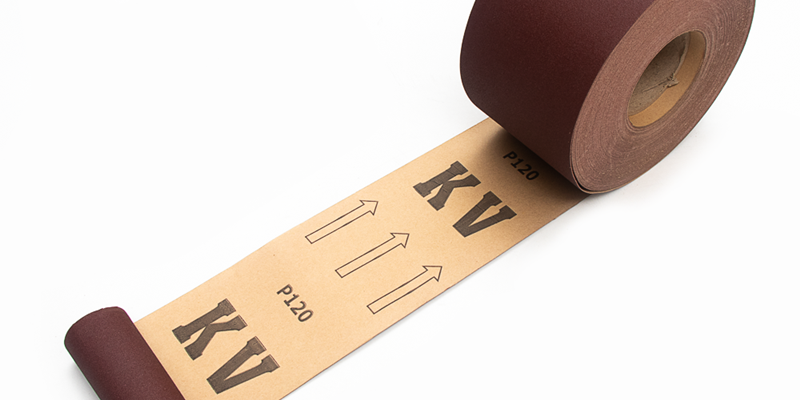Woodworking often requires precision and finesse when it comes to sanding, and mastering sandpaper roll techniques is essential for achieving professional results. In this blog post, we’ll explore some advanced sanding techniques for woodworking enthusiasts.
1. Cross-Grain Sanding:
- Purpose: Cross-grain sanding is used to remove deep scratches and imperfections, especially when working with hardwoods.
- Technique: Sand across the grain at a 45-degree angle using a coarse-grit sandpaper. Follow up with finer grits to remove cross-grain scratches.
2. Contour Sanding:
- Purpose: Contour sanding is ideal for smoothing curved or irregularly shaped surfaces.
- Technique: Wrap sandpaper around a flexible foam sanding block or use specialty contour sanding blocks to maintain consistent pressure on curved surfaces.
3. Edge Sanding:
- Purpose: Edge sanding is crucial for refining the edges of your woodwork.
- Technique: Fold a narrow strip of sandpaper and use it to sand edges. For precision, you can attach sandpaper to a wooden block or edge sanding tool.
4. Random Orbital Sander Finish:
- Purpose: Achieving a flawless, swirl-free finish.
- Technique: Use a random orbital sander with progressively finer grits. Keep the sander moving in a circular or random pattern to prevent swirl marks.
5. Wet Sanding:
- Purpose: Wet sanding is used for a super-smooth finish and to minimize dust.
- Technique: Submerge the sandpaper in water and sand the surface using a wet sanding block. Keep the workpiece and sandpaper wet during the process.
6. French Polishing Preparation:
- Purpose: Preparing wood surfaces for French polishing, a technique for achieving a high-gloss finish.
- Technique: Sand the wood with progressively finer grits until it’s perfectly smooth. Ensure dust removal between each sanding stage.
7. Veneer Sanding:
- Purpose: Delicate sanding for veneer work.
- Technique: Use a light touch with a fine-grit sandpaper to avoid damaging the thin veneer layer. Hand sanding is often preferred for veneer surfaces.
8. Sanding Between Coats:
- Purpose: Achieving a smooth finish when applying multiple coats of finish or paint.
- Technique: Use fine-grit sandpaper between coats to remove imperfections and create a surface that promotes adhesion for subsequent coats.
9. Dust Extraction:
- Purpose: Minimizing dust buildup during sanding.
- Technique: Use a sanding tool equipped with a dust collection system or attach a shop vacuum to your sander for efficient dust removal.
10. Hand Sanding Finishing Touch:
- Purpose: The final touch for perfect surfaces.
- Technique: Finish with hand sanding using a fine-grit sandpaper. Sand with the grain for a polished, blemish-free finish.
Remember to always wear appropriate safety gear, including eye protection and a dust mask, when sanding. Mastering these advanced sandpaper roll techniques will help you achieve exceptional woodworking results.










